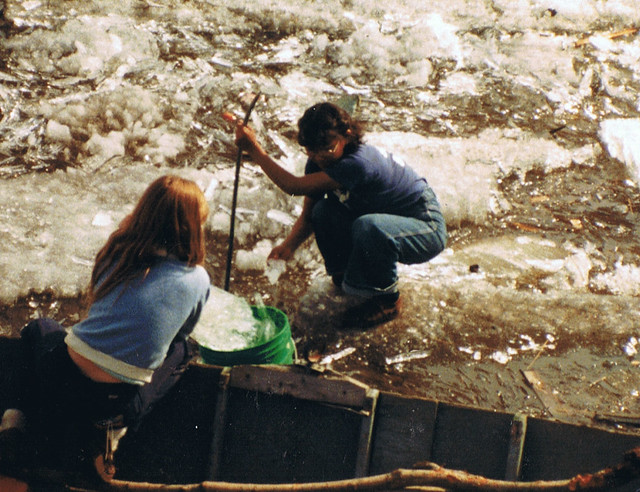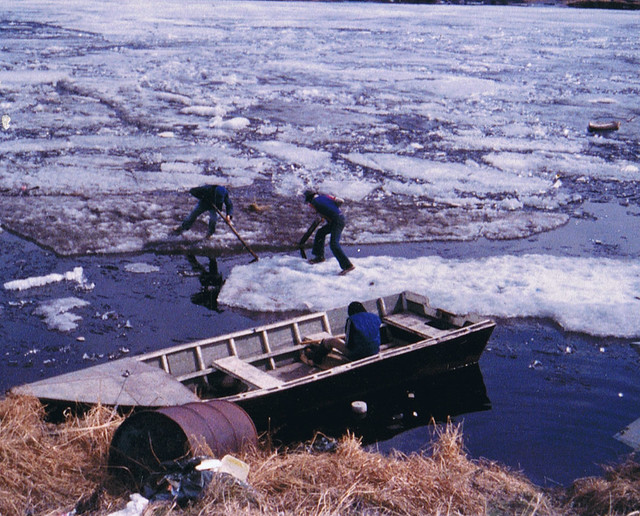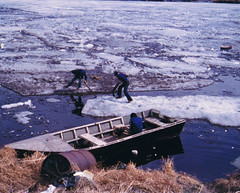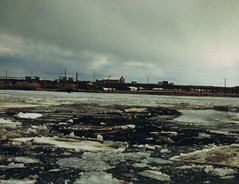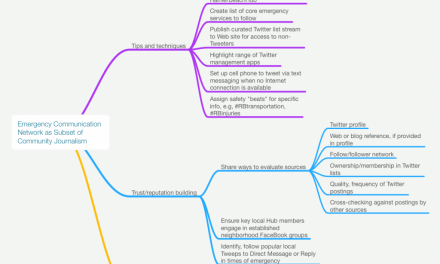Some moments become almost mythical in experience and memory, creating a broader frame of reference for the unfolding of personal and community journeys.
The Alaskan village of Selawik spanned both sides of a river near sea level as well as the island in the river’s midst; the primal role of river as life was a literal reality.
The progress of the year was measured by freeze-up, break-up and the seasonal running of the Sheefish for which both the village and the river were named, as well as the migratory patterns of caribou herds. And aside from the airstrip–frequently rendered useless by high cross-winds–the river provided the primary avenue of travel and transport–by boat during summer, by snowmachine in winter.
It was far easier to get around over ice and snow-covered tundra and river, and fresh water was readily available from the clear river ice, nearly three feet thick by mid-winter. Remove the surface snow and chop away.
As the ice thinned, the more bold–or foolhardy–marked the dangerous areas to avoid with twigs, creating the odd illusion of young saplings randomly scattered from shore to shore. People carried pocket knives to pull themselves out in the event of breaking through, and for several days before break-up, all crossings ceased.
Those with upstream fish camps headed out early so they could report back by CB radio the progress of the breakup as they followed the open water in boats.
And when the day arrived, everything came to a stand still. The electricity was turned off before the movement of ice could potentially sever the power lines that stretched from bank to bank to bank, across the river bottom. All was silent as young and old gathered to sit along the banks to watch the season change right there, right now, before their eyes.
You hear it first, a subtle clinking and crunching. Then what had been firm enough to walk on just days before began to subtly shift and move, the sound of breaking ice growing in volume and breadth.
Teenagers scampered across still solid areas to retrieve the last of the clear ice; some mounting the floes as temporary rafts, others reaching out from boats that had been left through the winter at the riverbank. As the entire surface of the river heaved and advanced, several flotilla of tree trunks and branches, uprooted and carried down from the mountains by the rising spring flood, began to appear–and were quickly retrieved for firewood.
And sometimes days later, in more shallow reaches, ice sheets that had formed on the river bed before the surface froze over would abruptly release and bob to the surface, unpleasantly surprising unsuspecting boaters passing above.
Some moments become almost mythical in experience and memory. In that moment, I became more deeply aware of the rhythm and flow of this community, and the ongoing desperate struggle of reconciliation with other lifestyles and rhythms, just as objective and unyielding in their own way as the freezing and breakup of the river. Are there limits to human adaptability?
Or could we be living in such times when long-frozen patterns of memory and tradition begin to break free and we can come to know ourselves and each other in a free-flowing awareness of common ground and origins?
Have we reached, by destiny and design, the point of convergence, where the streams of disparate journeys and conflicts may find their fulfillment in a confluence of fresh possibility and the dancing currents of a new, shared legacy?
The frozen misery of ages breaks, cracks, begins to move
The thunder is the thunder of the floes, the flood, the upstart spring
Thank God our time is now…
[A Sleep of Prisoners, Christopher Frye]

